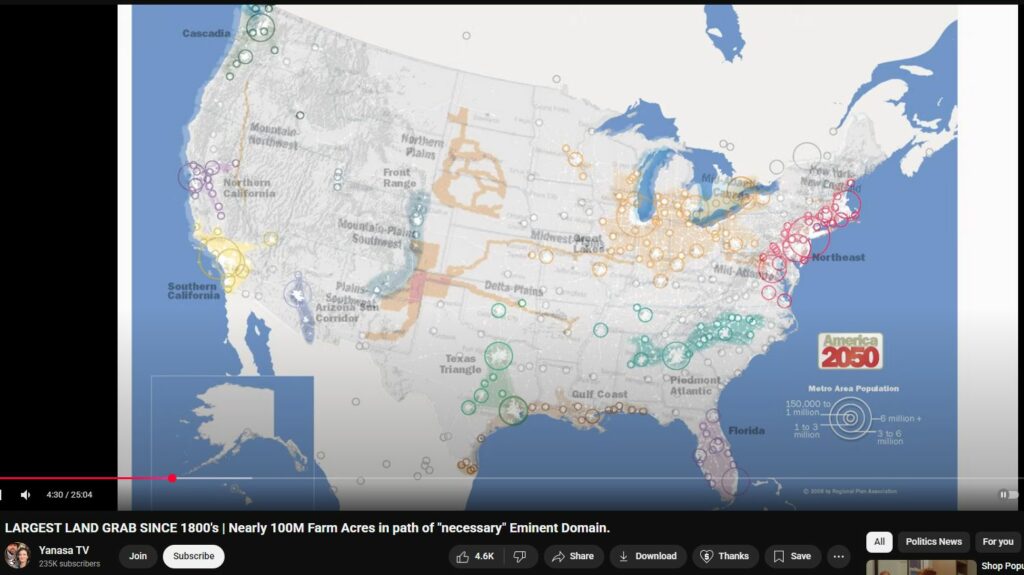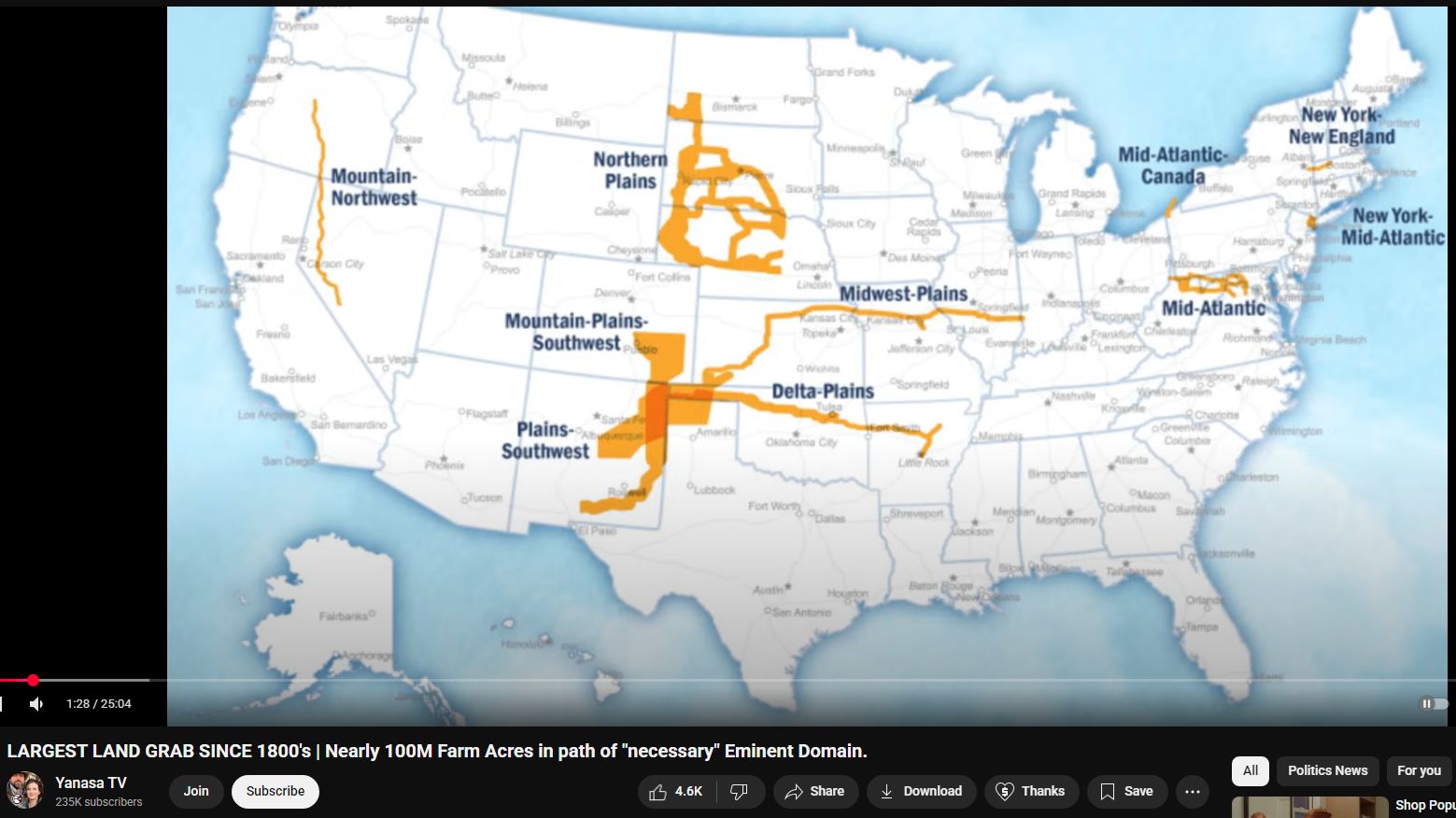Power Line Land Grab is Largest Grab of Farmland in American History
Up to 103 million acres planned to be grabbed across 10 states including Maryland. That’s 103 million football fields. Up to 162,000 square miles of farmland and private land grabbed.
The initiative to acquire farmland across Maryland for regional power lines is centered on the Maryland Piedmont Reliability Project (MPRP), a proposed high-voltage transmission line that has sparked significant debate and legal challenges.
Overlaid on 2050 USA Map, it’s clear the projects suit the Mega-regions, which are ‘the areas in which They plan on most of the US citizens will be congregated’ (around 4:20 into video below) because suspicious wildphyres will have by then driven them off their sprawled rural lands.
Project Overview
- Name: Maryland Piedmont Reliability Project (MPRP)
- Developer: PSEG Renewable Transmission LLC, a subsidiary of Public Service Enterprise Group (PSEG), based in New Jersey
- Route: Approximately 70 miles, traversing Baltimore, Carroll, and Frederick counties
- Infrastructure: 500-kilovolt (kV) overhead transmission line
- Purpose: To enhance grid reliability in Maryland amid increasing electricity demand and the planned retirement of local power plants (carrollcountymd.gov, corporate.pseg.com, wbaltv.com, corporate.pseg.com)
Regulatory and Legal Context
- Certificate of Public Convenience and Necessity (CPCN): PSEG filed an application with the Maryland Public Service Commission (PSC) on December 31, 2024. Approval is required before construction can commence (frederickcountymd.gov)
- Eminent Domain Dispute: PSEG has sought court orders to access over 100 private properties for environmental surveys, arguing that their application status grants them preliminary rights. Landowners and their attorneys contest this, stating that eminent domain powers are not conferred until after CPCN approval (marylandmatters.org)
Community Opposition
- STOP MPRP, Inc.: A grassroots organization led by local landowners, including President Joanne Frederick, opposing the project due to concerns over property rights, environmental impact, and the belief that the project primarily benefits out-of-state interests, such as data centers in Virginia (wbaltv.com)
- Local Government Stance: Frederick County officials have formally opposed the project, highlighting potential negative impacts on agricultural preservation areas and historic sites (frederickcountymd.gov)
Key Concerns
- Property Rights: Landowners are resisting survey access, fearing it could lead to eventual land seizure under eminent domain (marylandmatters.org)
- Environmental Impact: The proposed route may affect wetlands, forests, and farmland, raising ecological concerns
- Economic Implications: Critics argue that Maryland residents would bear the costs of a \$424 million project that primarily serves external entities (stopmprp.com)
Current Status
- Legal Proceedings: A federal judge in Baltimore is reviewing PSEG’s request for property access to conduct surveys. No decision has been issued as of now (wbaltv.com)
- Public Hearings: The Maryland PSC has scheduled a virtual pre-hearing conference for June 10, 2025, to discuss procedural matters related to the CPCN application (psc.state.md.us)
For more detailed information, you can visit the Maryland PSC’s project page or the STOP MPRP website.
Grabbing Farmland for “Green Energy” Infrastructure
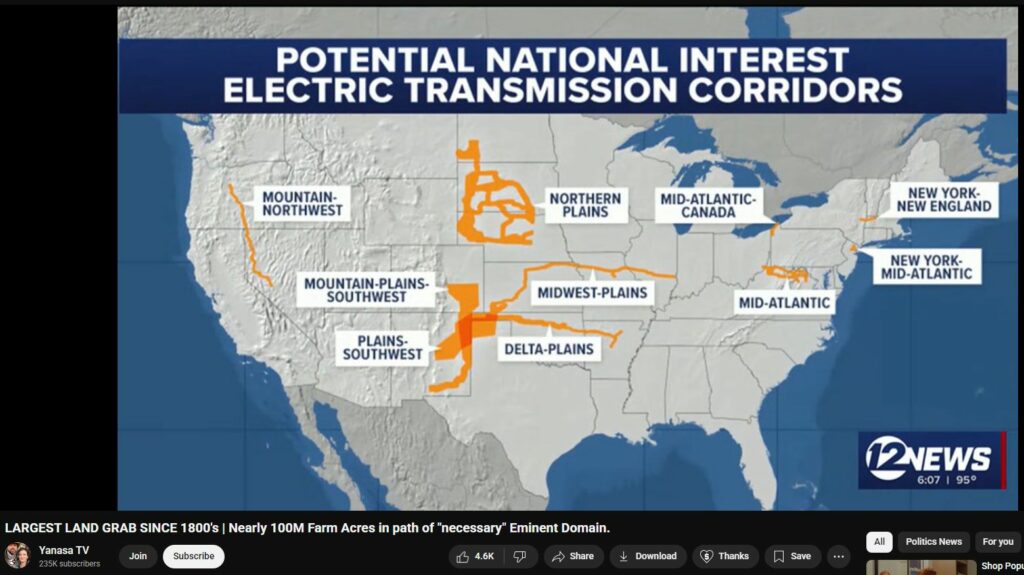

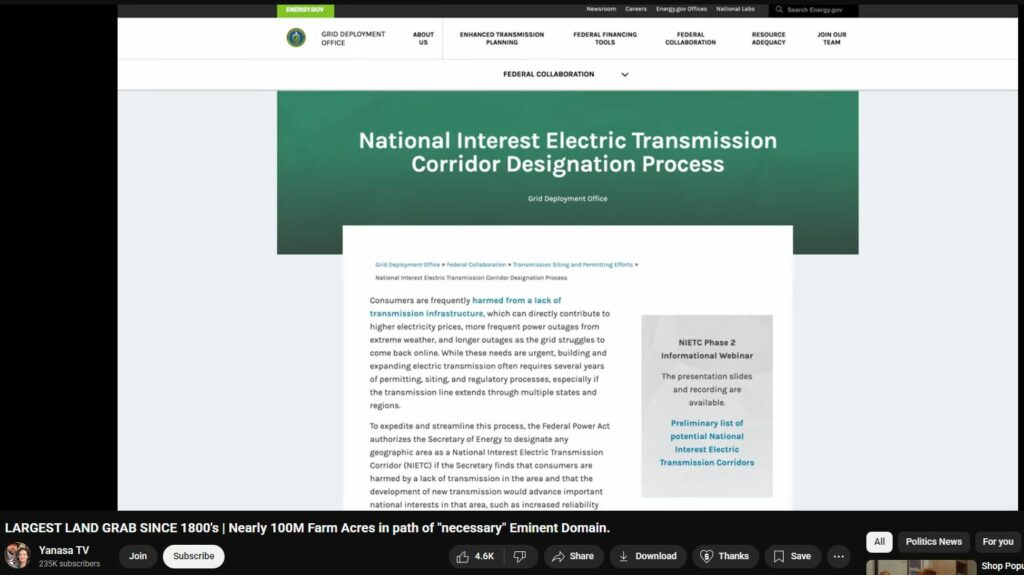
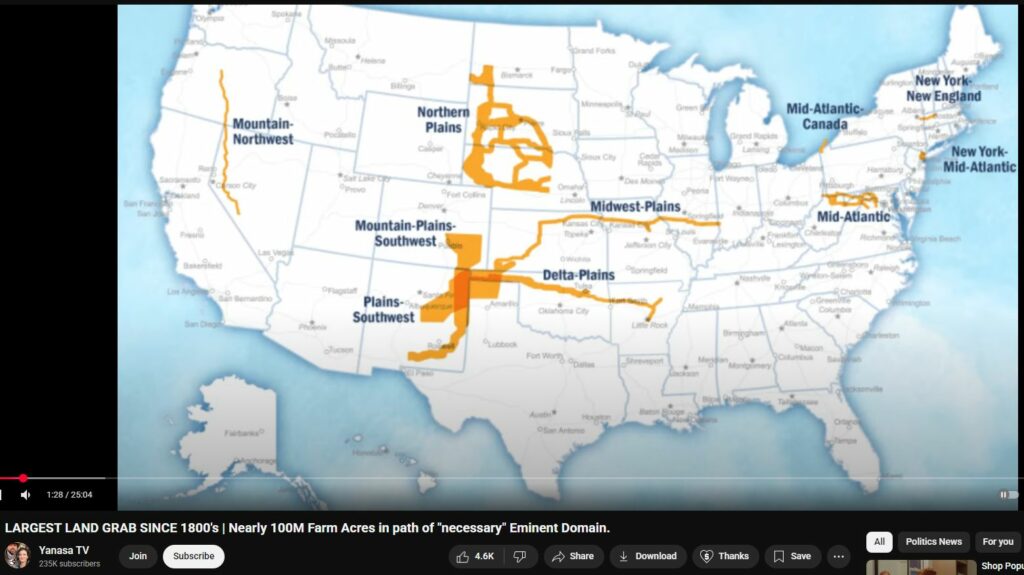
10 Grab Zones / Corridors
Delta Planes
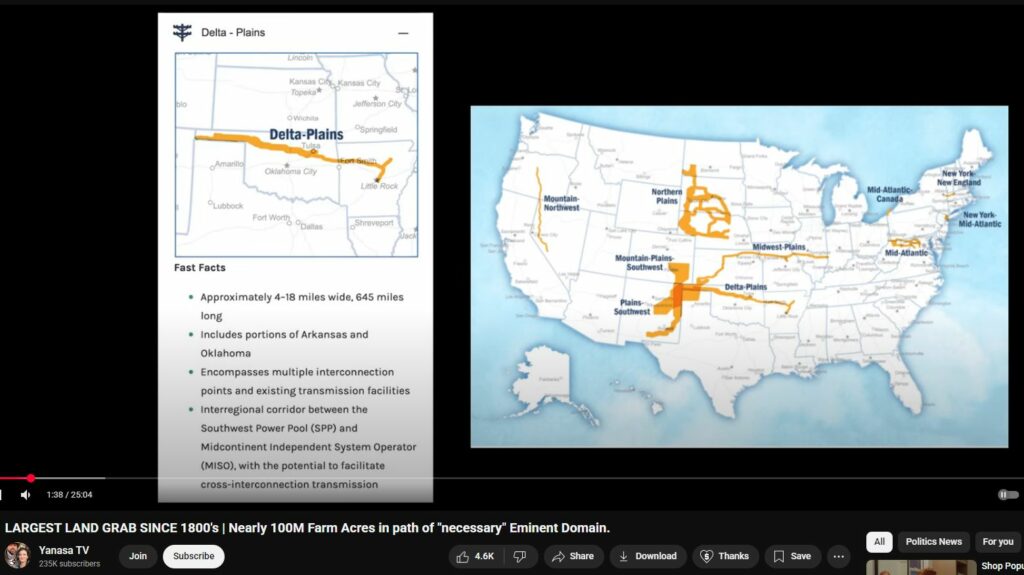
Mid-Atlantic
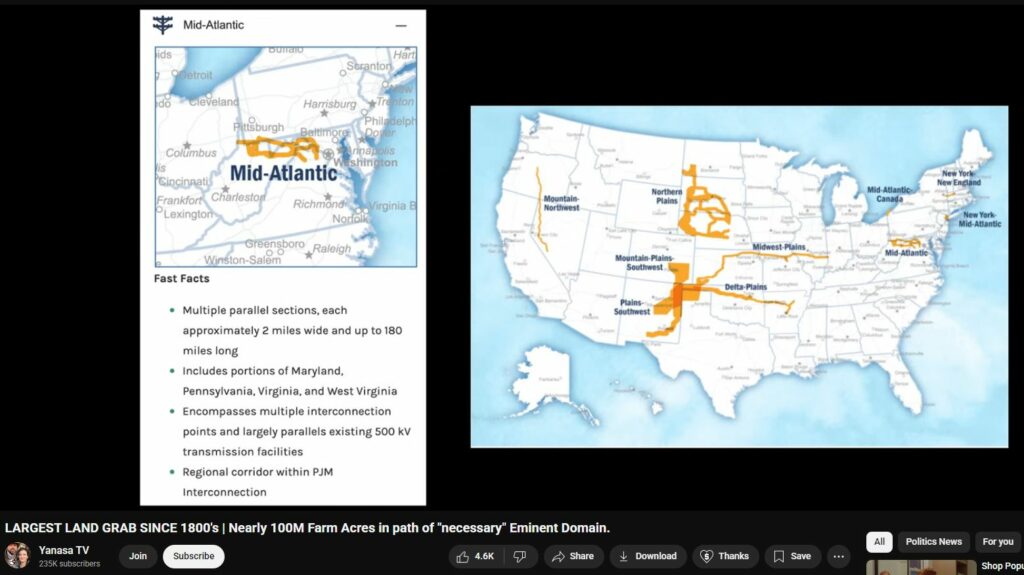
Mid-Atlantic Canada
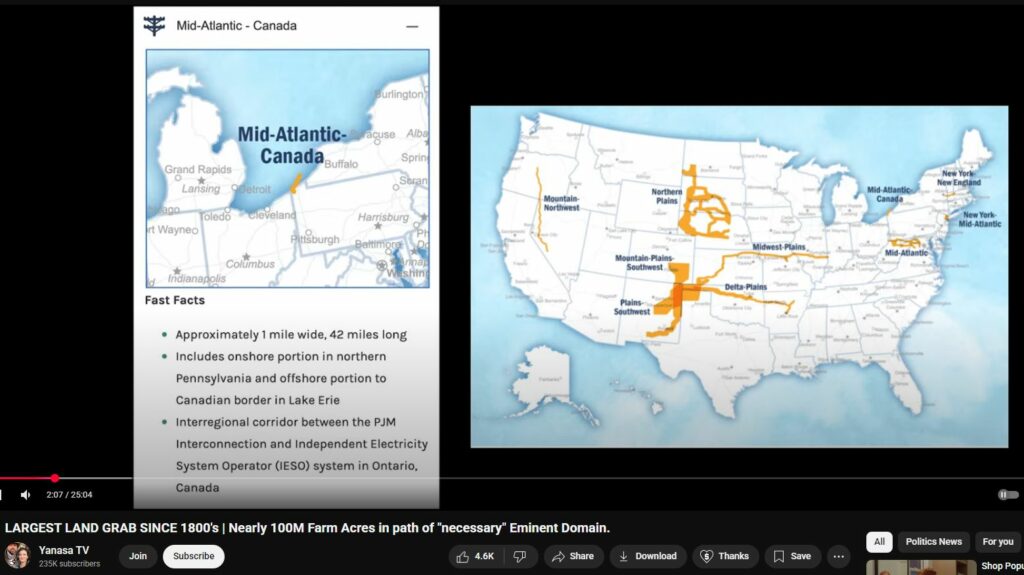
Midwest Plains
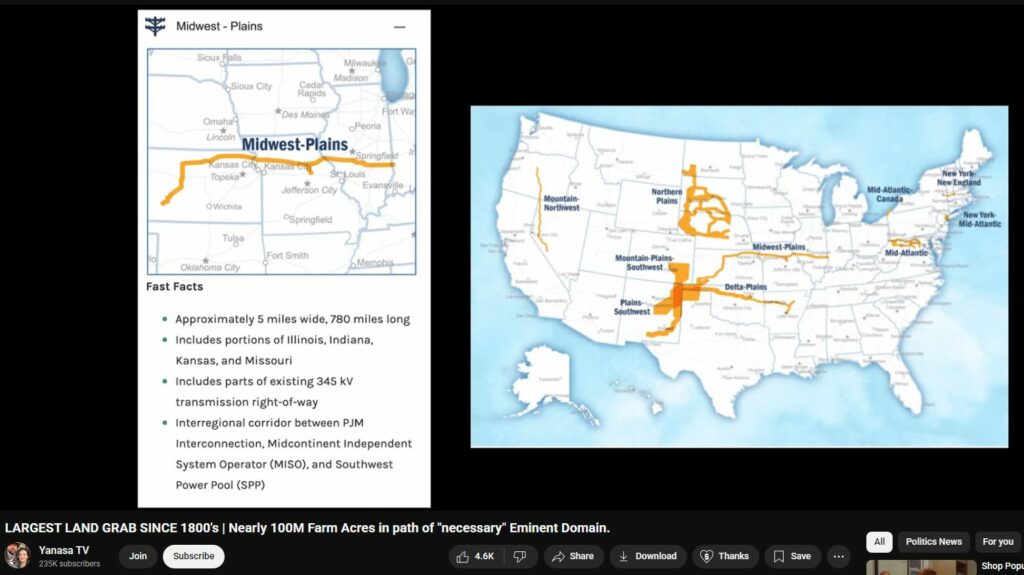
Mountain Northwest
This is approximately the situation of a ‘typical’ high-voltage power line. This is the narrowest grab in the bunch, some of which are suspiciously massive.
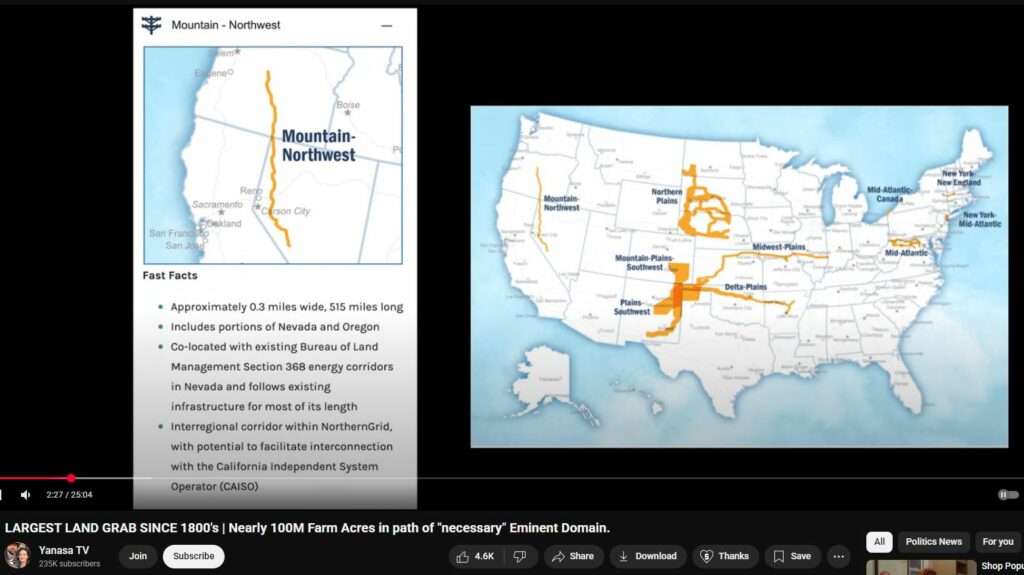
Mountain Plains Southwest
The appears to be part of an anti-meat/cattle initiative.
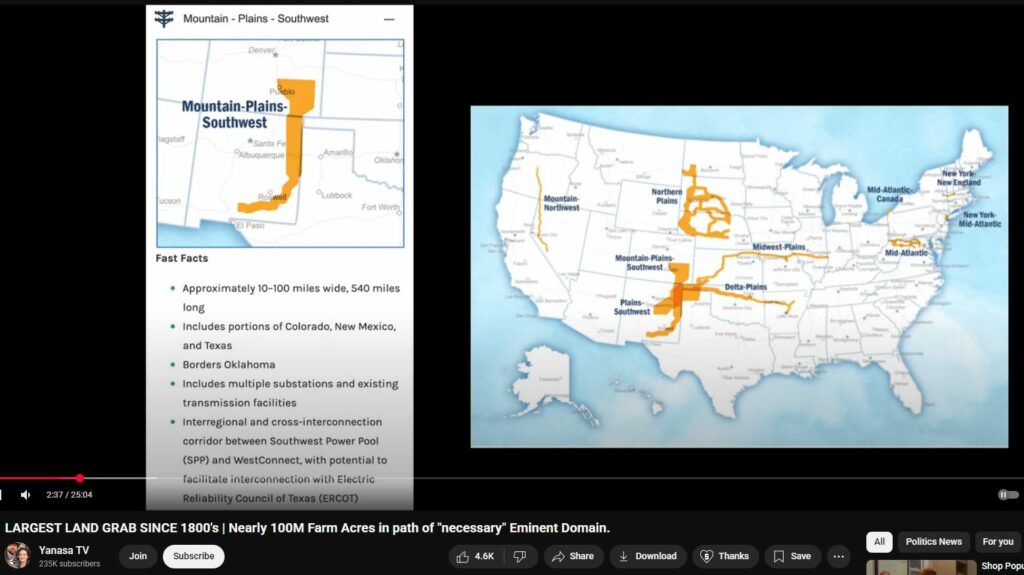
New York Mid-Atlantic
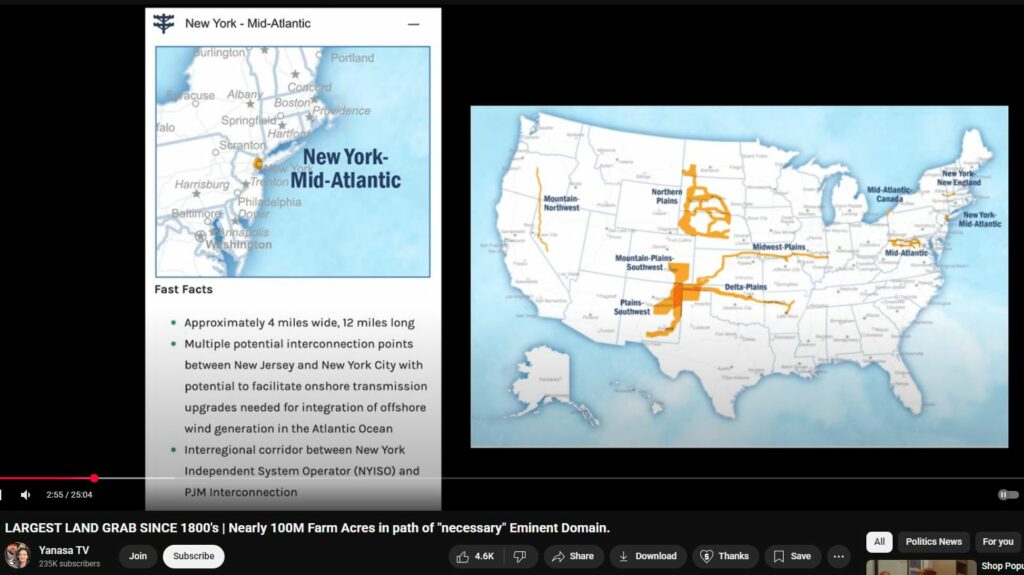
New York New England
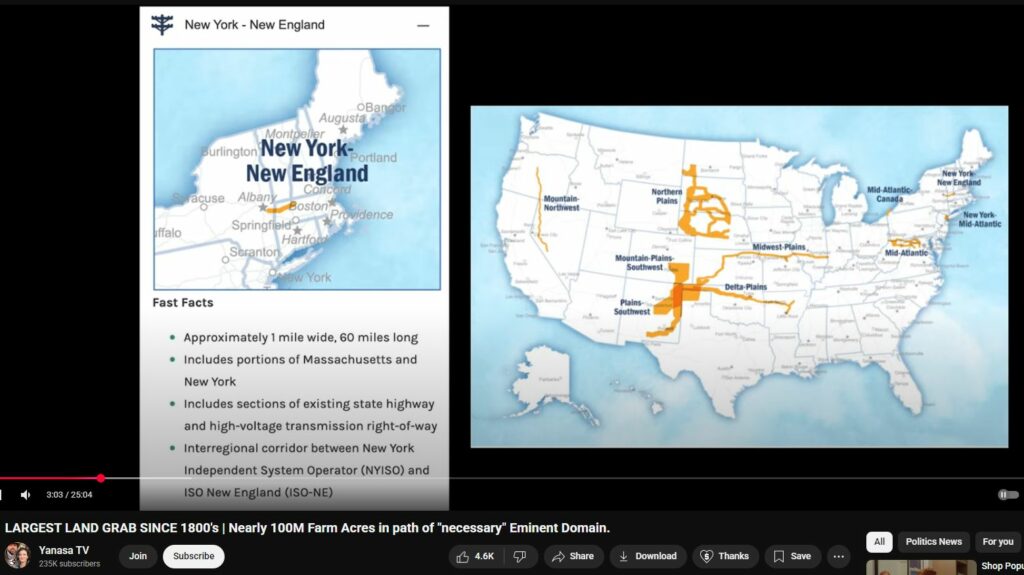
Northern Plains
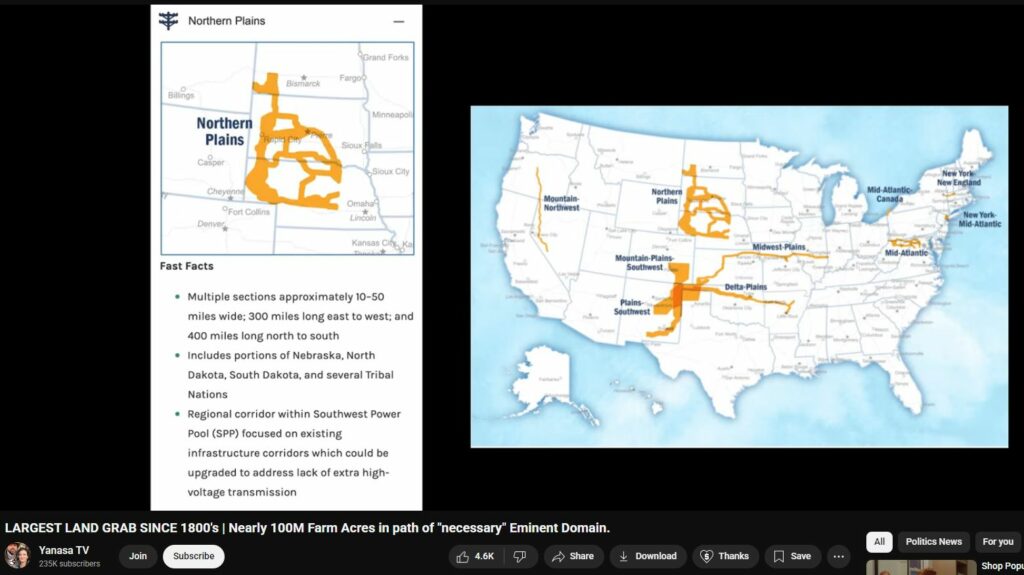
Plains Southwest
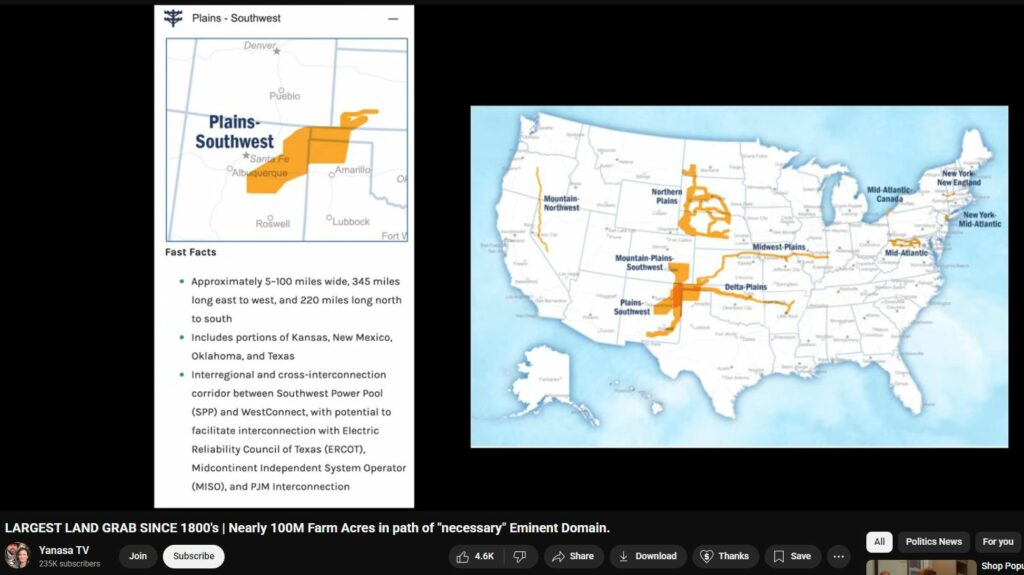
Mega-land grabs suit the Mega-Regions
